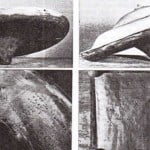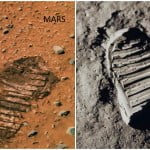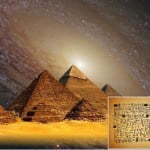
Super-Earth planets are large Earth-like planets. According to prior research, they are the most suitable place for a potential extraterrestrial life. However, a recent study discovers how difficult would it be if aliens on these exoplanets wanted to explore space due to the gravity.
The study also revealed that to initiate a mission matching to the Apollo one, a rocket on a Super-Earth would need a mass of around 440,000 tons, as a result of the fuel demands.
“On more-massive planets, spaceflight would be exponentially more expensive,” said study author Michael Hippke, an independent researcher related to the Sonneberg Observatory from Germany.
“Such civilizations would not have satellite TV, a moon mission or a Hubble Space Telescope,” he further added.
Super-Earths are a type of exoplanets that can reach up to 10 times the mass of our planet. Various of them are located in the livable areas of their stars since the temperature around there are capable of supporting liquid water. Therefore, they can also sustain life as known on Earth.
The research revealed that one Super-Earth may also be ‘super-habitable’ as in terms of supporting life even more than the Earth-like planets.
This is a result of their greater mass which gives them strong gravitational pull. Hence, they could carry thicker atmospheres to better protect life from hazardous cosmic beams.
If indeed life developed on a Super-Earth, then those aliens created an advanced civilization. But, the strong gravity on these planets would have made it almost impossible for this civilization to abandon these planets performing a spaceflight.
To understand how hard it would be for super-Earthlings to launch a traditional rocket, Hippke estimated the rocket’s size necessary to leave a Super-Earth. According to him, the size would have to be 70% wider than our planet and 10 times larger.
Approximately, these designations meet the ones of the alien planet Kepler-20b which lies 950 light-years from Earth. On such a world, the breakout speed is about 2.4 times larger than on Earth.
One of the biggest difficulties for habitats of such a planet would be the load of the fuel these rockets are carrying.
Namely, to launch a rocket, there is a requirement of tons of fuel. Tons of fuel will make the rocket heavy and so will the whole craft.
“I am surprised to see how close we as humans are to end up on a planet which is still reasonably lightweight to conduct spaceflight. Other civilizations, if they exist, might not be as lucky,” said Hippke.
Hippke further explained that if we can imagine a rocket launching from a Super-Earth similar to SpaceX’s Falcon Heavy. This rocket would require 60,000 tons of fuel.
“Civilizations from super-Earths are much less likely to explore the stars,” Hippke stated.
“Instead, they would be to some extent arrested on their home planet and, for example, make more use of lasers or radio telescopes for interstellar communication instead of sending probes or spaceships.”
However, rockets run better in the vacuum of space than in an atmosphere. So, Hippke proposed that habitats of Super-Earths will might want to launch from a mountaintop.
The strong gravitational strength of super-Earths would crush down their surfaces and this will lead to smaller mountains.
On the other hand, on Earth, the advantage of lancing at high altitudes is not very big in comparison when lancing at sea level, Hippke suggested.
There are other ways of reaching space instead of using a rocket. For example, space elevators or colossal cables rising out of the atmosphere.
However, what limits the space elevators is the power of the cable material. The most proper material, carbon nanotubes, is hardly strong enough for Earth’s gravity. Moreover, it’s uncertain if stronger materials are actually possible.
Another example is nuclear pulse propulsion. This would imply discharging a chain of atom bombs behind a vehicle to throw it through space. But, such a nuclear spacecraft would pose not only technical hurdles but political too, said Hippke.
The study is available in the International Journal of Astrobiology.









